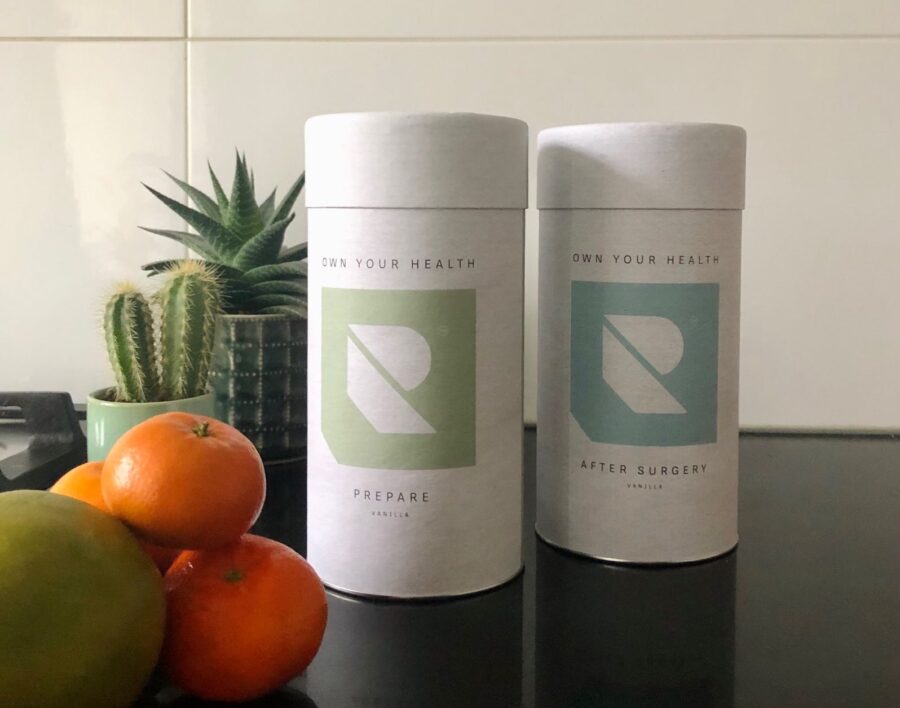Aftercare and living rules after a facelift
When you have a facelift done, your skin and face need time to recover. We often get asked what you can and cannot do after a facelift and how to promote recovery. Before the facelift treatment, the plastic surgeon will inform you in detail about the recovery, risks and possible complications.
Different types of facelifts
There are several types of facelifts. From the mini facelift(the S-lift), MACS facelift or a deep plane facelift including neck elevator. So one facelift is not the other. The duration of recovery also depends on the extent of the facelift. However, in general, the duration of recovery is often the same. This is mainly related to swelling, bruising and healing of the skin.
Read here about recovery after an S-Lift (specifically)
Especially if the facelift is combined with other procedures such as a forehead elevator or eyelid surgery and lipofilling, it will take a little longer before you are presentable again.
Facelift bandage wear
After surgery, your face will be bandaged. This will be removed after 24 hours. After removing the bandage, you will be given a facelift bandage. This is to prevent swelling and bruising as much as possible. It will need to be worn day and night for the first week. After that, depending on the procedure, for one or two weeks at night.
Drains
If necessary, drains (thin tubes) are placed after surgery to drain the wound fluid. If you go home with drains, they will be removed. You will receive a call from the assistant at MOOI Clinic. You can expect this call starting at noon. If you do not receive a call, we may not be able to reach you, please call the clinic. From day 3 you may shower briefly and wash your hair with a mild (baby) shampoo. This removes any blood residue and simplifies the removal of sutures at the hairline.
Cooling
Cooling is not necessary with a facelift. If additional correction has been done to the eyelids or eyebrows, however, this is advisable. With a coldpack, you counteract swelling around the eyes. At home, it is best to continue cooling regularly on the day of surgery. There is no need to refrigerate during the night. When cooling, every hour for 5-10 minutes is sufficient. The following days several times a day if comfortable. It is important, however, to put something between a cold pack and the skin to protect it.
The first days after your facelift
After surgery, you can usually go home the same day. We check that everything is fine with you and after our plastic surgeon’s approval, you may go home. In order to obtain the most MOOI result and speed up your recovery, we recommend the following: (Unless expressly stated otherwise by the plastic surgeon).
WHAT HAVE I GOTTEN MYSELF INTO?
Chances are this is haunting your head: what have I gotten myself into? Your face is sore, swollen and looks overcorrected. It is also quite possible for parts of your face to be numb; this recovers as time goes on. This is a normal process. During the first 2 weeks, you see improvement every day and are usually “presentable” again. If additional procedures have been done on the face, it may take a week longer. After 6 to 12 weeks, you can properly assess the results, and only after six months do the scars mature.
DO: EAT GROUND FOOD
On the day of surgery, you will be given ground food. At home you may eat pureed soups, yogurt, porridge, pudding, etc. 24 hours after surgery, this may be expanded to include soft foods (e.g., pasta, stew). Eat with small bites and avoid eating hard or tough foods e.g. apples, steak. Keep this up for 2 weeks.
DON’T: DRIVE YOURSELF HOME
One thing you should not do immediately after surgery is get behind the wheel yourself. So make sure there is someone with you who can drive you home safely. In addition, your face is wrapped with bandages and must take it easy for the first few days.
DO: REST A LOT
The first few days after your facelift you should take it easy, real bed rest for the first two days. Avoid active situations where you have to do a lot of talking/ laughing. This applies to anyone who has had this surgery (major or minor). This means resting a lot and not doing (heavy) household chores such as laundry, vacuuming, etc. Is there someone who can cook delicious meals for you, help you get dressed and undressed or occasionally get up for you? It is nice when there is someone who can help you.
Note! Resting does not mean lying in bed all day. Resting too much and too long is not good for your body either. Stretch your legs occasionally, even if it is during a short walk from the toilet to the couch. Stick to short distances indoors.
DON’T DO IT RIGHT AWAY: SHOWERING AND BATHING
If you do not have drains, you may shower briefly again 3 days after surgery if you feel the need. Be careful to rub dry around the scars and avoid getting the plasters wet. If you do have drains, then you should wait to shower for a while anyway. However, you should not bathe for the first 6 weeks until the scars are completely healed.
You should wash your hair with a mild shampoo, such as baby shampoo, 3 days before your first checkup. This counteracts crusting and makes removing the sutures easier.
DO: TAKE PAIN MEDICATION
If you feel lousy or your face/jaw is painful, you may always take paracetamol and any additional painkillers prescribed by the doctor.
DON’T: SLEEP ON YOUR STOMACH OR SIDE
We recommend sleeping in a semi-seated position. If there is a combination with a forehead elevator with/ and/or eyelid surgery, this area may be cooled against edema. At least for one week, do not sleep on your side or stomach.
DON’T: SMOKING
Especially don’t! Smoking adversely affects blood flow to the tissues, which is precisely what is important for proper recovery. We therefore recommend that you stop smoking weeks before and after treatment. It is also better not to smoke after treatment. This accelerates the aging process and increases the risk of complications.
DON’T: DRINK ALCOHOL
Do not use alcohol in the first week after treatment because of the risk of post-treatment bleeding.
One week after your facelift
After a week you will return to the clinic for a check-up. Your stitches will be removed, or possibly some of the stitches. You only need to wear the facelift bandage at night after the checkup. During this checkup, also discuss any activities you want to resume, as well as your medication use and favorite sleeping position.
Two weeks after your facelift
Especially in the first few days, there may be bruising, swelling and edema. Especially the area around the eyes and neck is more sensitive to this. In most people, this is mostly gone after 10 days or so. In some cases, this may take longer but it recovers on its own. If additional procedures were done on the eyelids, eyebrow or lipofilling, it may take a week longer.
HECHTINGS
Two weeks after treatment, you will come for a check-up with the nurse or plastic surgeon. Remaining sutures are unclipped and plasters removed. The scars are inconspicuous at first glance. Also during recovery and healing. They fall right into the hairline and the natural folds of the skin. However, the scars will be red at first. That is becoming less and less. Do not expose the scars to bright sunlight; this can cause permanent discoloration. The plastic surgeon will give you instructions on aftercare and/or massaging the scars.
Two weeks after your facelift, you are allowed a little more again, but still a long way to go! Always consult with the plastic surgeon.
YOU MAY DO THIS AGAIN:
- Keep food gentle first 2 weeks and then build up according to symptoms.
- Driving a car (already after 1 week)
- Depending on your occupation, you may start working again (not intensively)
- Walking and gentle movements
- If your recovery goes well, you will be allowed to fly again after 2 weeks. Chances of problems are then nil. Consult with the physician beforehand.
YOU MAY NOT DO THIS YET:
- Wearing makeup (only after 3 weeks)
- Putting too much tension on your face and neck
- Sports, including not swimming (only after 6 weeks)
- Heavy lifting or physically strenuous work
- Tanning, sauna or tanning bed
Six weeks after your facelift
After six weeks, you are usually well recovered from the surgery. It is difficult to say when the face will return to full normal appearance. This varies from person to person and depends on the amount of wound fluid or bruising under the skin. An average period of 6 weeks is calculated. In some cases, the face looks back to normal much sooner and in others it may take a little longer. Minor hardening may also occur where the plastic surgeon will advise you to massage it. Depending on the situation before surgery, the face will look smoother, tighter and younger.
Most people can fully resume their normal lives after 6 weeks. You get to bathe, sauna and sleep the way you want again.
DOING: SPORTS
Exercise is good for your body and after all those weeks of not exercising, maybe it’s time to do something about your fitness again. Fortunately, after 6 weeks, you can return to sports. Fitness, swimming, cycling, running, if it feels good and you experience no pain then you can just start doing this.
You might also find Manon’ s experience story interesting!
Final inspection and result
After about 3 months, you will come for a final check-up at MOOI Clinic. The times mentioned for recovery are averages and can vary greatly from person to person but in most people it goes very smoothly. Scars begin to turn from red to pink somewhere between 3-6 months, eventually turning pale and therefore almost invisible.
A facelift, depending on the type has good effect on your neck, jawline and mid face, but may not reach certain areas. For example, it will not improve lip lines. Perioral lines will also not always improve completely. Aging has more aspects such as skin aging and volume loss which is not corrected with a facelift alone. In that case, lipofilling or certain injectables may offer a solution. Peeling or laser treatment of the skin can also provide further improvement.
Are you in doubt about your situation as to whether or not you should be allowed to do something? Then contact us!
A prosperous recovery begins with proper preparation
A body that is healthy and fit before surgery will recover faster and better. The better your condition and general well-being were before surgery, the faster you recover. Therefore, make sure your body is fit and has enough nutrients for the surgery. This ensures better wound healing after surgery and reduces the risk of complications. Our partner R-Support has developed two science-based nutritional supplements for this purpose: Recover Prepare and Recover After Surgery. In preparation for surgery, you could start two weeks in advance with
Recover Prepare
. This is a shake that enhances your immune system and replenishes any deficiencies in essential nutrients for your surgery. It complements your normal (healthy) diet. Immediately after surgery, you could start with
Recover After Surgery
to maximize recovery and promote wound healing.
Do keep in mind the time you need to be sober for the surgery.
Furthermore, if possible, arrange for extra household help, such as a partner, friend or loved one who can help you out the first few days. Stop smoking, too!




